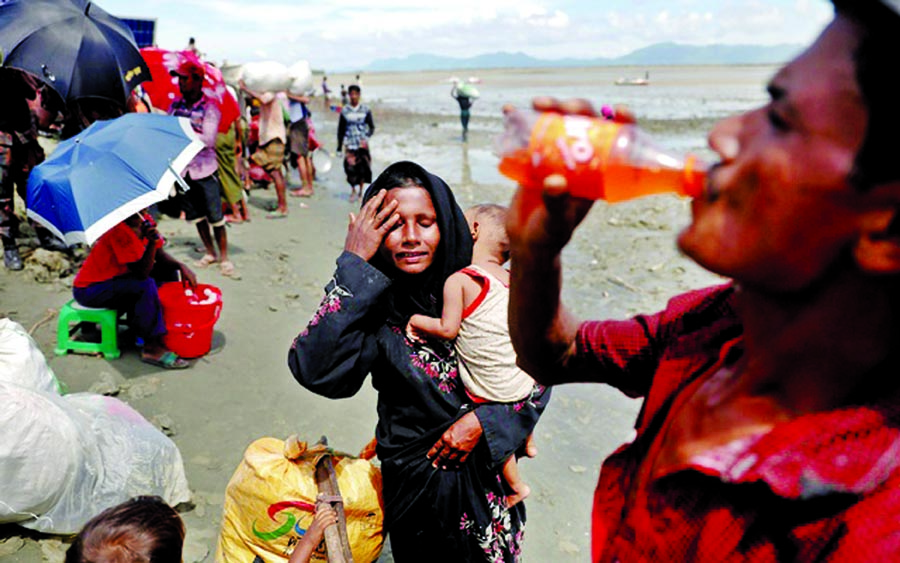
Rohingya refugees continue to pour into Bangladesh fleeing persistent violence in the Rakhine state of Myanmar.
More than 30,000 Rohingyas have arrived in Cox’s Bazar in the last two days through porous borders between Bangladesh and Myanmar, sources said.
“They burnt our houses and drove us out by shooting. We walked for three days through the jungle,” said Mohammed, who fled to Bangladesh with his family of seven, including a baby born along the way.
Rohingya refugees have been fleeing violence in Myanmar at a staggering rate and the numbers keep growing, UNCHR spokesperson Vivian Tan told media on Tuesday.
“They arrive exhausted, hungry and sick… They are in need of international protection and humanitarian assistance,” he added.
According to the UNCHR, the vast majority of Rohingya refugees reaching Bangladesh are women and children, including newborn babies. Many others are elderly people requiring additional aid and protection.
“As more refugees arrive every day there is an acute need for emergency shelters and land to them, blankets and other forms of aid. The vast majority of newly arriving refugees are now living outside the camps, in makeshift settlements and temporary shelters,” said Vivian Tan.
He mentioned that infrastructure and services of existing camps are overstretched. Refugees continue to arrive there in extremely poor condition. Even, they are in risk of waterborne and airborne diseases.
“We are working with the Government of Bangladesh and other authorities to identify suitable spaces to accommodate them,” said Vivian Tan.
The UN Refugee agency spokesperson further said the refugees and the host communities are in urgent need for more clean water, health care and other supplies to lessen the risk of diseases.
“Pregnant women, young children and the elderly are especially vulnerable,” he added.
UNHCR last week said an estimated 501,000 Rohigyas have arrived Bangladesh since violence erupted on August 25 in Myanmar.
The two existing refugee camps of Kutupalong and Nayapara, established in the 1990s, were already home to over 33,000 Rohingya refugees before this influx. Now the camps’ population has soared to an estimated 77,000, well beyond existing capacity, with many new arrivals taken in by refugee families or hosted in the camps’ schools, community centres and other covered structures.
UNHCR earlier sought US$30 million urgent fund to respond to the ongoing refugee emergency in Bangladesh, which was already coping with devastating floods before the refugee influx.
Of this amount, US$6 million is immediately needed for shelter and core relief items for Rohingya refugees. Much more needs to be done to meet the acute needs of children, women and men fleeing conflict.

